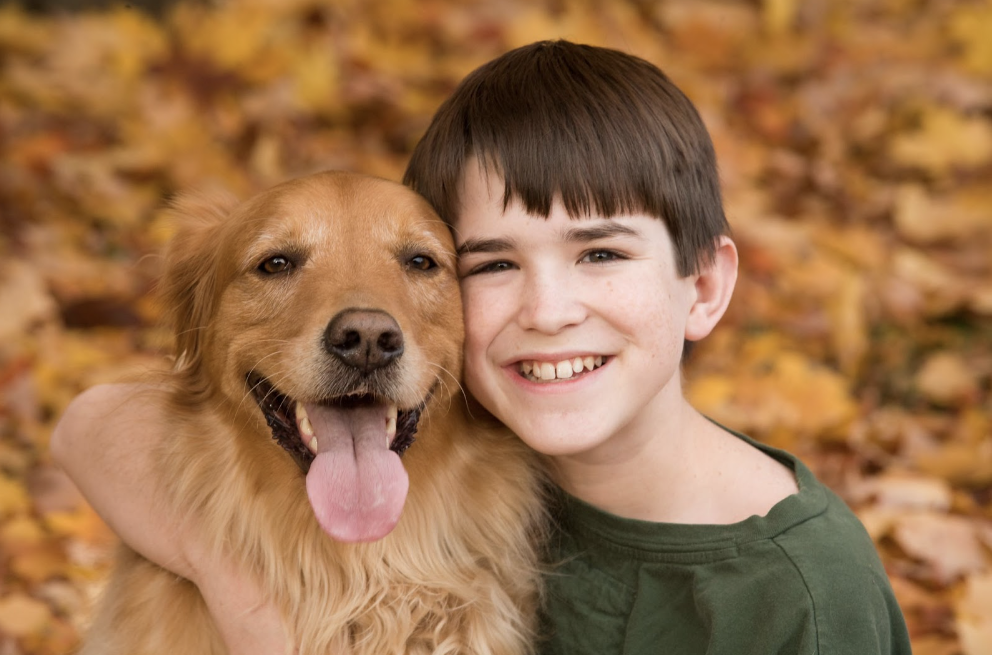Bringing a new dog into your home is an exciting time, particularly when children are involved. Imagining your children playing fetch or cuddling with the new dog is heartwarming. Achieving a happy relationship between the dog and your children involves careful planning, patience, and education to ensure their interactions are safe and positive.
Choosing and Welcoming Your Family’s New Pet
Choosing the right dog for your family is the first critical step. A dog that shows a genuine interest in children is ideal, as it’s a strong indicator of compatibility. However, even a child-friendly dog will need time to adjust to new environments and people. Therefore, introductions should be handled with care, ensuring the dog doesn’t feel overwhelmed and has the space to retreat if necessary.
Steps for a Safe and Positive First Meeting
The first meeting is crucial and should be conducted with the dog on a leash to control the interaction. Instruct your children on the importance of calm behavior and explain how to gently coax the dog to approach with treats placed on the ground, avoiding direct eye contact, which dogs can find threatening.
As the dog becomes more comfortable, children can offer treats from their hand, held at their side, allowing the dog to approach them. It’s essential to communicate to your children the significance of not making direct eye contact, not reaching out to the dog, and especially not hugging the dog initially, as these actions can be intimidating or unwelcome.
Handling Different Dog Reactions
Dogs, like humans, have varied personalities and reactions. A fearful dog should not be forced into interactions, as this can exacerbate its anxiety. Instead, encourage gentle approaches with treats and consider professional guidance for behavior training if necessary.
For dogs that are simply energetic, teaching them to sit before receiving a treat can help manage their energy and prevent jumping. Tools such as a Gentle Leader head halter may assist in managing exuberant dogs. Remember, physical punishment is never the answer and can harm your relationship with the dog.
Building a Relationship Between Children and Dogs
Supervised interactions are crucial for building a safe and positive relationship between your children and the new dog. Never leave children unsupervised with the dog, regardless of the dog’s previously observed behavior. Children often do not recognize the signs of a dog’s discomfort, and it is the adult’s responsibility to intervene before any negative interactions can escalate.
It is essential to educate your children on how to interact with the dog respectfully—such as not sitting on the dog, pulling its ears, or bothering it while eating. Demonstrating and reinforcing these behaviors can prevent misunderstandings and foster a respectful relationship.
Special Considerations for Older Dogs and Children
Older dogs may have specific needs due to health issues like arthritis or sensory impairments. Children should be taught to approach these dogs gently and be made aware of the dog’s limitations.
Wrap-Up
Introducing a new dog to your children involves more than just putting them in the same room together. It requires a thoughtful, structured approach that respects the dog’s and the children’s boundaries and comfort levels. Investing time and patience in these early days will pay off in a harmonious and loving relationship that enriches your family life. Remember, the goal is to add a pet to your household and welcome a new member into your family.
FAQs
How do I choose the right dog breed for my family with children
Consider breeds known for their friendly and patient nature towards children, such as Labrador Retrievers, Golden Retrievers, and Beagles. Research breed characteristics, energy levels, and size to ensure they match your family’s lifestyle. Consulting with a veterinarian or a professional dog trainer can also provide personalized advice based on your family’s specific needs.
What age is appropriate for my child to start taking part in dog care responsibilities?
Children can start participating in dog care activities around the age of 5 with simple tasks like filling the dog’s water bowl or helping with feeding under supervision. As they grow older, they can take on more responsibilities, such as walking the dog with an adult, grooming, and participating in training sessions. Tailor tasks to match your child’s age, maturity level, and the dog’s temperament.
Are there any specific signs of jealousy I should watch for in my dog towards my child?
Signs of jealousy can include the dog pushing in between you and your child, barking or whining when you show affection to your child, or showing signs of aggression. Address any signs of jealousy early by reinforcing positive behavior and ensuring the dog receives enough attention and exercise. Consulting with a professional dog trainer may be beneficial in managing and modifying these behaviors.
How often should my child and the dog have “quiet time” together?
Daily quiet time can be beneficial for both the dog and your child, as it strengthens their bond and allows for calm interactions. This could be during a calm petting session, reading a book with the dog nearby, or simply sitting together. Monitor these interactions to ensure they are positive and relaxing for both the child and the dog.
Get the right coverage for your pet with tutenagency
New tutenagency customers?
Quote pet insurance online or call (334) 502-5111 to insure your pet.
Legal Disclaimer: ADVERTISING MATERIAL ONLY. Do not rely on this site or this article for legal or financial advice. The information provided on 210agency.com is strictly for educational purposes and to provide you with general educational information. Since state laws and financial regulations are subject to change, please schedule an appointment with an attorney or qualified financial advisor in your area to further discuss your personal situation. This public information is neither intended to, nor will it, create an attorney-client or financial representative relationship.

